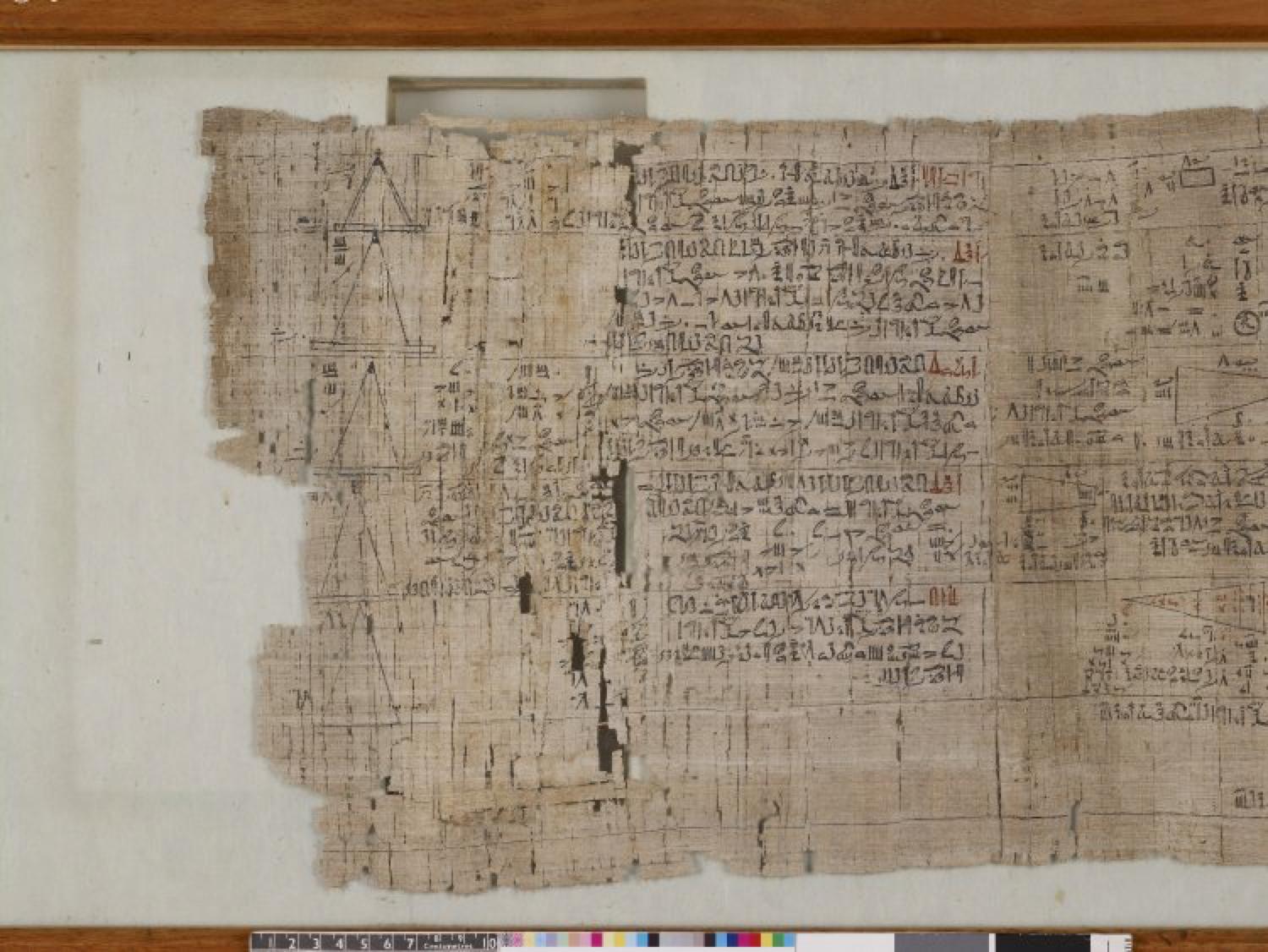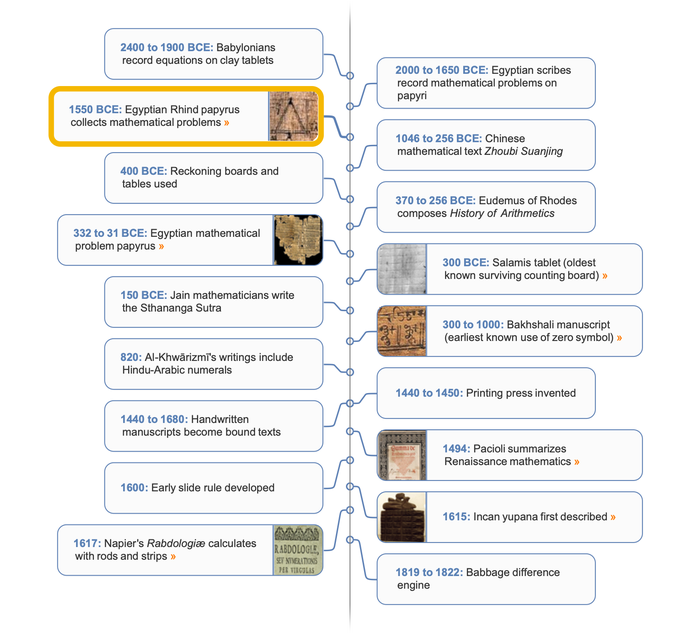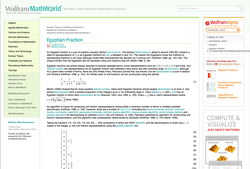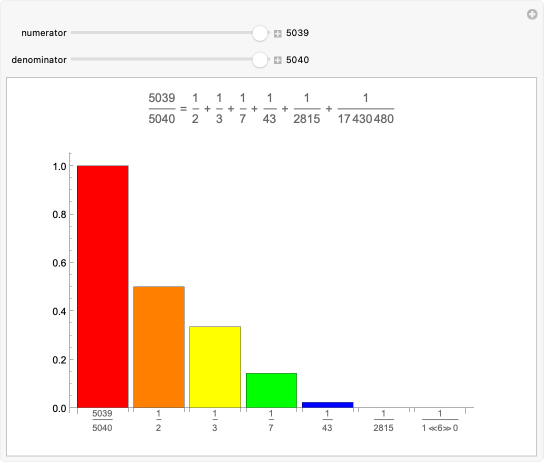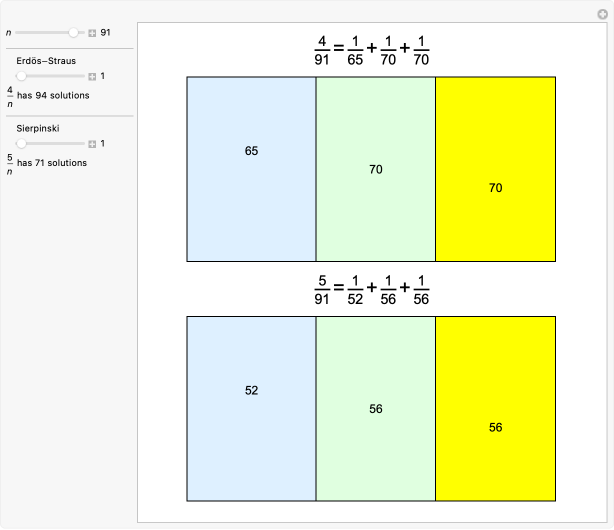around 1550 BCE
Rhind Papyrus
Famous papyrus of the scribe Ahmes
The Rhind papyrus is one of the most famous ancient Egyptian mathematical texts. It is named after Scottish antiquarian Alexander Henry Rhind, who purchased the papyrus in Luxor, Egypt, in 1858. The majority of the papyrus was acquired by the British Museum in 1865, though a few small fragments are now held by the Brooklyn Museum in New York City. One strip of the papyrus has been lost.

The Rhind papyrus was copied by the scribe Ahmes around 1550 BCE from a now-lost earlier text. Ahmes described the papyrus as providing "Accurate reckoning for inquiring into things, and the knowledge of all things, mysteries… all secrets," identifies himself as the writer and gives the date. The papyrus is divided into three books, the first part consisting of reference tables (including the famous 2/n table) and a collection of arithmetic and algebraic problems, the second part consisting of geometry problems and the third part containing a miscellany of problems.

